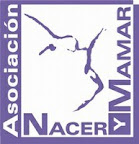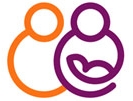POSICIÓN de la madre al parto asistido por MATRONAS y el TRAUMA PERINEAL: ¿Existe una asociación?. Maternal position at midwife-attended birth and perineal trauma: is there an association?
ARTICULO ORIGINAL CONCLUSIONES: Las mujeres deben tener la opción de dar a luz en cualquier posición que encuentren cómodos. Maternity practitioners have a responsibility to inform women of the likelihood of perineal trauma in the preferred birth position. los profesionales de la maternidad tienen la responsabilidad de informar a las mujeres del riesgo de trauma perineal, en la posición de parto que prefiera. Ongoing audit of all clinicians attending births is encouraged to further determine effects of maternal birth position and perineal trauma, to investigate women's perception of comfortable positioning at birth, and to measure changes to midwifery practice resulting from this study. de auditoría en curso de todos los médicos que asisten los partos se recomienda para determinar mejor los efectos de la posición de la madre al nacer y el trauma perineal, para investigar la percepción de las mujeres de una posición cómoda en el nacimiento, y para medir los cambios en la práctica del parto como resultado de este estudio.
Abstract
BACKGROUND: Most women will sustain some degree of trauma to the genital tract after vaginal birth. This study aimed to examine the association between maternal position at birth and perineal outcome in women who had a midwife-attended, spontaneous vaginal birth and an uncomplicated pregnancy at term.
METHODS: Data from 3,756 births in a major public tertiary teaching hospital were eligible for analysis. The need for sutures in perineal trauma was evaluated and compared for each major factor studied (maternal age, first vaginal delivery, induction of labor, not occipitoanterior, use of regional anesthesia, deflexed head and newborn birthweight >3,500 g). Birth positions were compared against each other. Subgroup analysis determined whether birth positions mattered more or less in each of the major factors studied. The chi-square test was used to compare categorical variables.
RESULTS: Most women (65.9%) gave birth in the semi-recumbent position. Of the 1,679 women (44.5%) who required perineal suturing, semi-recumbent position was associated with the need for perineal sutures, whereas all-fours was associated with reduced need for sutures; these associations were more marked in first vaginal births and newborn birth weight over 3,500 g. When regional anesthesia was used, semi-recumbent position was associated with a need for suturing, and lateral position associated with a reduced need for suturing. The four major factors significantly related to perineal trauma included first vaginal birth, use of regional anesthesia, deflexed head, and newborn weight more than 3,500 g.
CONCLUSIONS: Women should be given the choice to give birth in whatever position they find comfortable. Maternity practitioners have a responsibility to inform women of the likelihood of perineal trauma in the preferred birth position. Ongoing audit of all clinicians attending births is encouraged to further determine effects of maternal birth position and perineal trauma, to investigate women's perception of comfortable positioning at birth, and to measure changes to midwifery practice resulting from this study.







 Anterior: Resultados perineal y comodidad materna relacionada con la aplicación de COMPRESAS CALIENTES.Perineal outcomes and maternal comfort related to the application of perineal warm packs in the second stage of labor: a randomized controlled trial.
Anterior: Resultados perineal y comodidad materna relacionada con la aplicación de COMPRESAS CALIENTES.Perineal outcomes and maternal comfort related to the application of perineal warm packs in the second stage of labor: a randomized controlled trial.

 Web MatronasUbeda by
Web MatronasUbeda by 